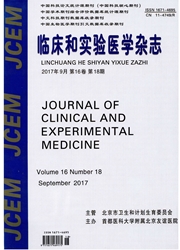

 中文摘要:
中文摘要:
【摘要】肺动脉高压(PAH)是无法治愈的致命性疾病,血管收缩和舒张机制失衡启动PAH的-系列病理生理反应。肾素-血管紧张素系统(RAS)新轴(扩张血管轴)血管紧张素转换酶2-血管紧张素(1—7)-G蛋白耦联受体轴[ACE2-Ang-(1—7)-Mas]是经典轴(缩血管、增殖轴)血管紧张素转换酶-血管紧张素Ⅱ-血管紧张素U1型受体轴(ACE—AngⅡ-AT1R)的负向调节轴。通过回顾ACE2治疗PAH病理生理机制的相关研究发现,ACE2-Ang-(1—7)-Mas轴可通过降低炎症级联反应、改善血管内皮功能障碍、调节自主神经,以降低野百合碱(MCT)诱导的PAH;通过抑制肺动脉平滑肌细胞增殖以降低缺氧诱导的PAH;此外,ACE2能够降低先天性心脏病患者的PAH。因此,ACE2可能成为预防和治疗PAH的前景用药。
 英文摘要:
英文摘要:
Pulmonary arterial hypertension (PAH) is an incurable fatal disease, with the mechanism of imbalance of vascular contraction and relaxation which start as a series of pathophysiological reactions. Angiotensin- converting enzyme 2-angiotensin (1-7)-G protein-coupled receptor axis [ACE2-Ang(1-7)-Mas], an expanded vascular axis which is considered as new axis of renin-angiotensin system (RAS) is a negative regulator of the classical angiotensin-converting enzyme-angiotensin Ⅱ -angiotensin Ⅱ type 1 receptor axis (ACE-Ang Ⅱ -AT1R), a contraction vessel, proliferation axis. A retrospective study concerning the pathophysiological mechanism of ACE2 in the treatment of PAH was done and found that ACE2-Ang-(1-7)-Mas axis could reduce PAH induced by monocrotaline (MCT) through declining the inflammatory cascade, improving endothelial dysfunction and regulating autonomic nerve, reduce PAH induced by hypoxia through inhibiting the proliferation of pulmonary artery smooth muscle cells and reduce PAH induced by congenital heart disease. Therefore, ACE2 may become a future drug of preventing and treating PAH.
 同期刊论文项目
同期刊论文项目
 同项目期刊论文
同项目期刊论文
 期刊信息
期刊信息
